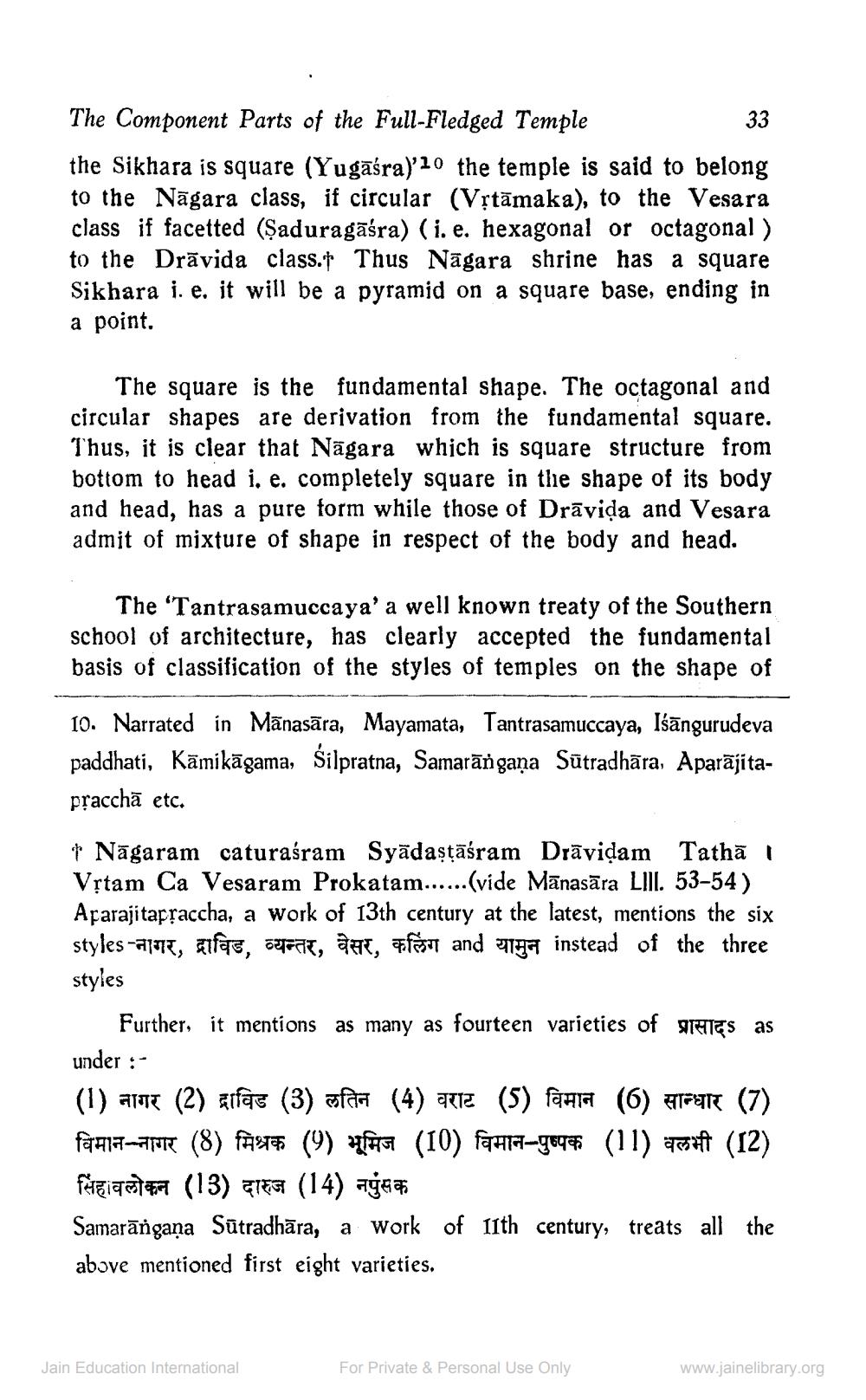________________
The Component Parts of the Full-Fledged Temple
33 the Sikhara is square (Yugāšra)'10 the temple is said to belong to the Nāgara class, if circular (Vștāmaka), to the Vesara class if facetted (Şaduragāśra) (i.e. hexagonal or octagonal) to the Drāvida class. Thus Nāgara shrine has a square Sikhara i. e. it will be a pyramid on a square base, ending in a point.
The square is the fundamental shape. The octagonal and circular shapes are derivation from the fundamental square. Thus, it is clear that Nagara which is square structure from bottom to head i. e. completely square in the shape of its body and head, has a pure form while those of Drāvida and Vesara admit of mixture of shape in respect of the body and head.
The 'Tantrasamuccaya' a well known treaty of the Southern school of architecture, has clearly accepted the fundamental basis of classification of the styles of temples on the shape of
10. Narrated in Mānasāra, Mayamata, Tantrasamuccaya, Iśāngurudeva paddhati, Kāmikāgama, Silpratna, Samarāngana Sūtradhāra, Aparājitapracchā etc.
† Nāgaram caturaśram Syādaștāśram Drāvidam Tathā 1 Vịtam Ca Vesaram Prokatam......(vide Mānasāra LIII. 53–54) Aparajitapşaccha, a work of 13th century at the latest, mentions the six styles -a1317, afas, fat, ah, afisat and 71977 instead of the three
styles
Further, it mentions as many as fourteen varieties of salgs as under :(1) a11 (2) alice (3) afda (4) 2212 (5) fahia (6) Arar (7) farqlama TOR (8) fÀ2017 (9) HITS (10) fahra_984 (11) pet (12) FA 17347 (13) TEST (14) age Samarāngana Sūtradhāra, a work of 11th century, treats all the above mentioned first eight varieties.
Jain Education International
For Private & Personal Use Only
www.jainelibrary.org




